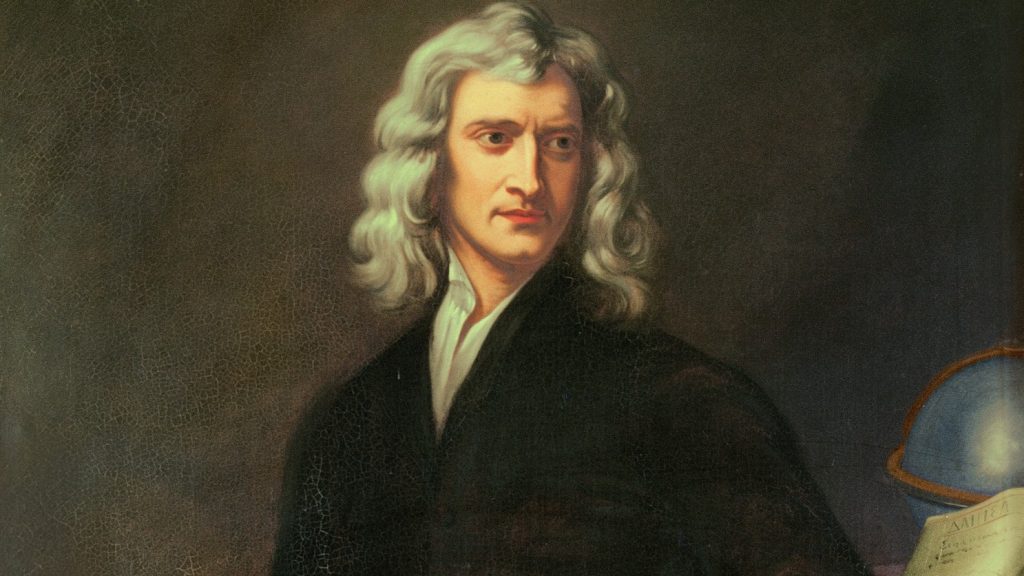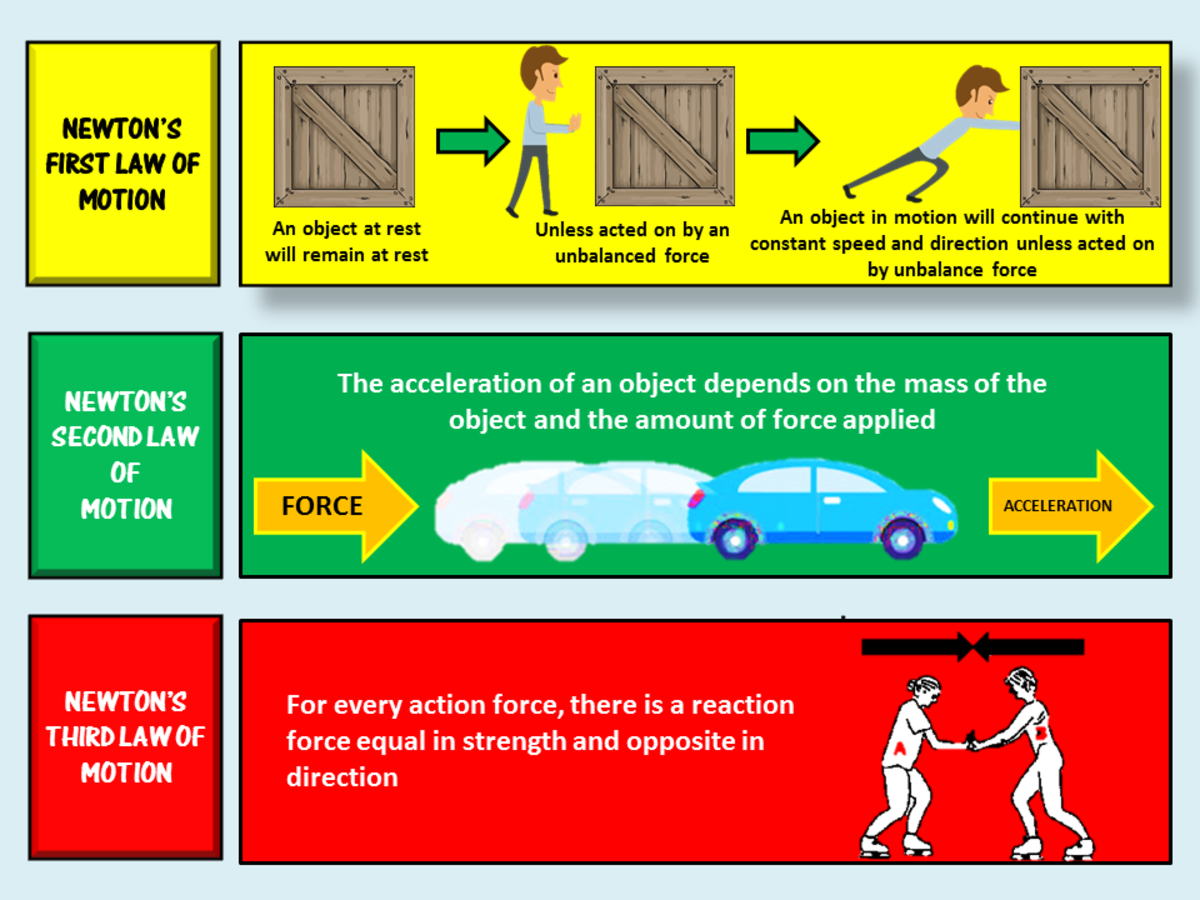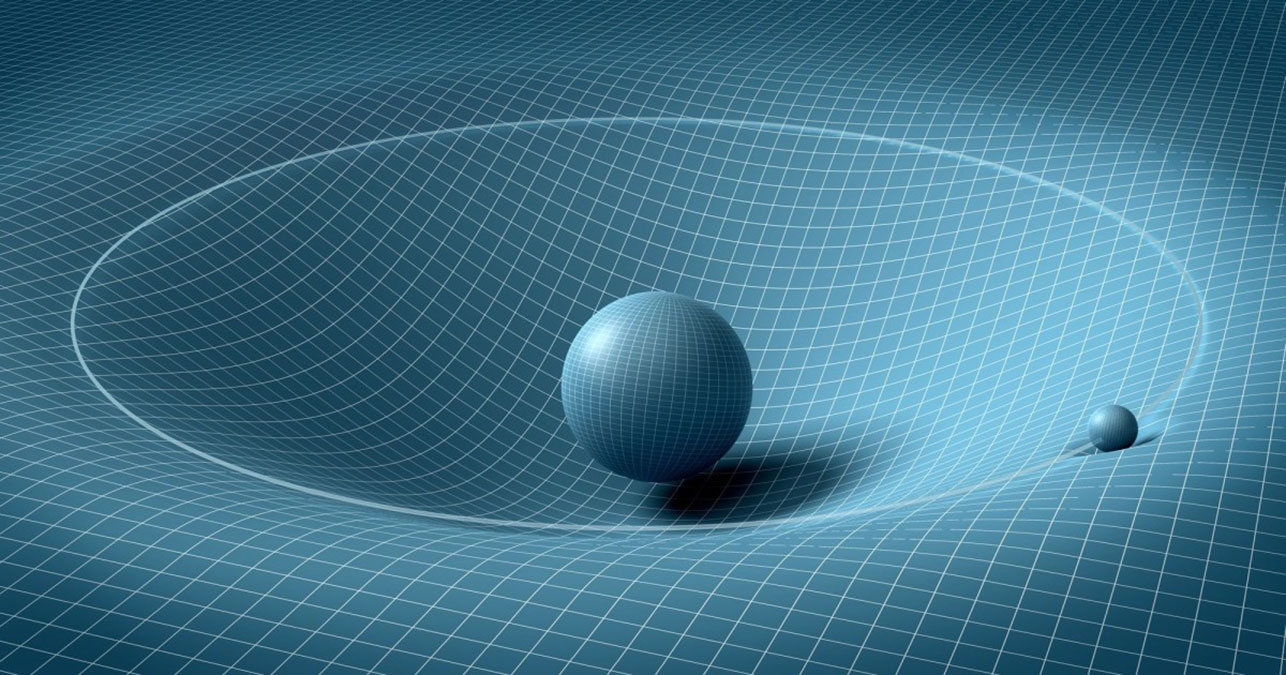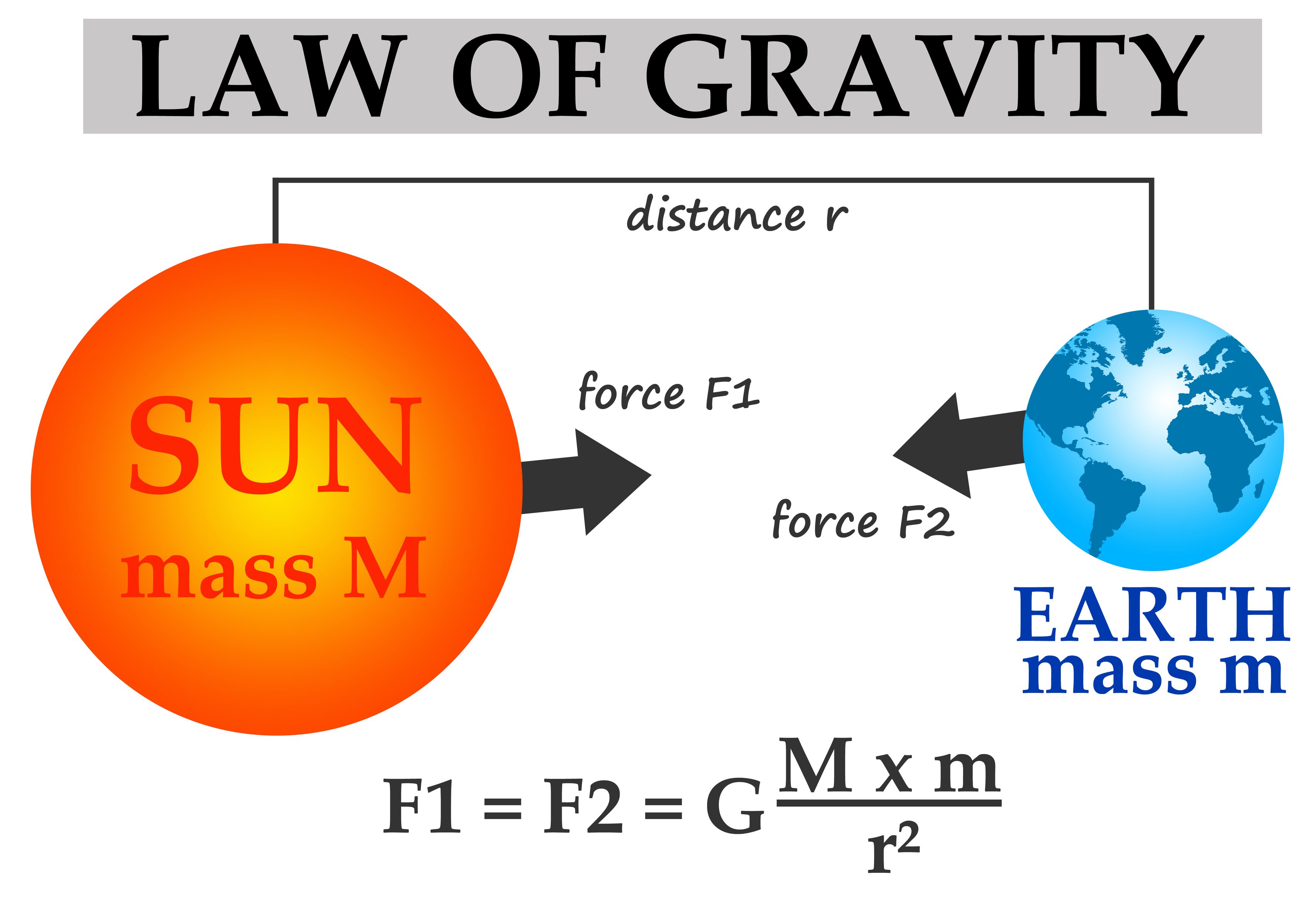Introduction
Whenever you look around yourself, your mind fills with curiosity and questions – How does this thing work? What are the factors working behind it? There are some complicated sets of things working behind every natural phenomenon. The laws of physics work, rules of motion and other universally applied laws behind making most things work.
Motion is one such very important concept and its laws are applied to all things that can move. In this article, we are going to talk about the three golden rules of motion given by Isaac Newton. And it will also talk about the universal law of gravitation. You will get to know about a lot of things like how an action takes place and what factors affect it. So if you are a student of physics or are curious about things in general, then this article will be of great help to you.
Brief About Isaac Newton
Isaac Newton PRS was an English mathematician, physicist, astronomer, alchemist, theologian, and author widely recognized as one of the greatest mathematicians and physicists and among the most influential scientists of all time. He was born on 4 January 1643 and died on 31 March 1727. He is the person who brought a revolution in the field of physics by coining key terms related to motion and gravity. Today, most laws in the field of Physics revolve around these. He was a prime figure in the philosophical revolution known as the Enlightenment. Some of his other findings include optics (white light composition) and mathematics (calculus).

What is Motion?
To begin with, the most basic thing that you need to know is what exactly motion means. If we talk about literal terms then motion can be defined as the phenomenon in which an object changes its position over time. And to describe it terms like displacement, distance, velocity, acceleration, speed, and time are used. Motion means the movement of an object and it is done with the help of kinetic energy. When an object is in motion, it changes its position by moving in a direction: up, down, forward, or backward. Three different types of motions are:
- Translational
- Rotational
- Oscillatory
The very basic equation of motion according to the second law of motion is F = ma.
Important terms related to Motion that you need to know about
Motion is a single word but to understand it in a proper way you need to know about some of the other basic terms as well. Mentioned below are some basic terms related to motion:
/GettyImages-637481524-7788e3dc814645379debe599283b658d.jpg)
Displacement
Displacement implies that an object has moved, or has been displaced. In simple words, it means a change in the position of an object after it has moved. It is a vector whose length is the shortest distance from the initial to the final position of a point P undergoing motion.
Formula of displacement is s = sf – si. s = displacement.
Distance
Distance is a numerical measurement of how far apart objects or points are. Generally, it refers to the gap that one needs to travel from one point to another point. To sum up, distance means the extent or amount of space between two things, points, lines, etc. It is measured in the terms of Meters.
Velocity
Velocity is a very important term in physics. It means the rate of change of its position with respect to a frame of reference and is a function of time. It walks in relation and is the rate of change of its position with respect to a frame of reference, and is a function of time. Unit of Velocity is mph, ft/s.
Acceleration
Acceleration means the rate at which the velocity changes and that too in terms of speed and direction. A point or an object moving in a straight line is accelerated if it speeds up or slows down. Three levels of acceleration are positive, negative, and transverse.
Speed
The speed of an object is the magnitude of the rate of change of its position with time or the magnitude of the change of its position per unit of time. And it is measured in terms of kinetic energy. It is a very common term that we use in our everyday life.
Time
Time means the duration a thing has taken to move from one place to another.
Three Important Laws of Motion given by Newton
Motion is a complex thing and has a lot of exceptions to it. Isaac Newton tossed three important laws related to motion:

Newton’s First Law: The Law of Inertia
The very first Newton’s law of motion states that an object remains in motion and will continue to remain in motion until an external force is applied to it. It will keep moving at a constant speed if force is not applied to it. The law of inertia was first formulated by Galileo Galilei for horizontal motion on Earth and was later generalized by René Descartes. It also states that the direction of an object moving in a straight line will also not change. It will keep going in a straight line until an external force works on it. To sum up it can be said that motion can only be transferred and cannot be created.

Newton’s Second Law of Acceleration: F = ma
The second law of motion states that the rate of change of the momentum of a body with respect to time is equal in both magnitude and direction to the force imposed on it. All together it states that the acceleration of an object as produced by a net force is directly proportional to the magnitude of the net force, in the same direction as the net force, and inversely proportional to the mass of the object. It states that F=ma. It is a very important law and defines the working of a lot of things.

Newton’s Third Law: The Law of Action and Reaction
The last and final law of motion states that every action has an equal and opposite reaction. This means that when a force is applied in one direction then the same amount of force will be applied in the opposite direction. It also states that when two bodies interact, they apply forces to one another that are equal in magnitude and opposite in direction.
For example, the recoil of a gun; if we shoot it in the front then the same force will be applied in the back direction. This law is important in analyzing problems of static equilibrium, where all forces are balanced, but it also applies to bodies in uniform or accelerated motion.

Some other Laws of Motion that you need to know about
Usually, we are taught only three laws given by Newton about motion because they are the most accurate and useful ones. But he gave many more laws, some of them are mentioned below:
- An object at rest stays at rest or an object in motion stays in motion until unbalanced forces act upon it.
- Two particles of mass M and m are mutually attracted with equal and opposite forces F and -F according to the following relationship: ^Mm. -lr.: rz. is the distance between the two particles.
- The inertia of an object is its resistance to change in its motion and will remain the same till an external force works upon it.
Most of Newton’s laws revolve around motion, how it works, and the things that work as a resistance for it. Understanding the laws of motion is really important. Have a look at this video as it will help in making things clear.
Influence created by Newton’s Law of Motions
All the laws given by Newton worked as a revolution in the field of physics and paved the way for man’s other inventions and findings. Mentioned below are some of the influences created by his laws:
- The very main thing that he did was solve the mystery about gravity and many other forces that works on us all the time and we are not aware of them.
- It tells us about everyday things like what will happen if we jump from a moving bus and how it will affect us.
- Newton helped create a new, specialized form of mathematics. And also gave us calculus, which charted the constantly changing and variable state of nature.
- Simplified the working of everyday things that might otherwise have been taken as complex things. Like now we know how ice skating works and other movement takes place.
- Now we can explain the tides, the motion of cannonballs, virtually everything we see in the world around us.
- It would not be wrong to say that Isaac Newton changed the world of science and simplified things for the upcoming generations. His influence can be seen in all aspects of life and it is difficult to carry out any physics experiment without referring to his works.
What is Gravity?
Gravity is all around us no matter which corner of this planet we visit but we are still not clear about what exactly gravity is. Gravity is a natural phenomenon or can also be referred to as an attractive force that works on everything that has mass and energy. Be its planets, stars, galaxies, and even light, gravity works on all things. It gives weight to physical objects, and the Moon’s gravity causes the tides of the oceans. It is the main force that keeps all the objects in their place and is responsible for the falling of the things in a downward direction rather than upward direction. Gravity has an infinite range, although its effects become weaker as objects get farther away.
Also read Spider Curls: The Right Form, Benefits, and Tips

Newton’s Law of Universal Gravity
Newton was the first person to think about it. What happened was he was sitting under an apple tree one day and then suddenly an apple fell on his head. He became curious about why the apple fell only downwards and not upwards. And then he starts working on it. He read a lot of books carried out a lot of experiments and many types of research. It took him years to find out what force it is and how it works.
Mentioned below is the law of Gravitation that was given by Newton and how it works:
Newton’s universal law of gravitation states that every particle in the universe attracts every other particle in it. And it is done with the help of a force that works on all things all the time. The force varies directly with the mass of the product and is inversely related to the square of the distance between them. In symbols, the magnitude of the attractive force F is equal to G (the gravitational constant, a number the size of which depends on the system of units used and which is a universal constant) multiplied by the product of the masses and divided by the square of the distance
The formula of this law is R: F = G(m1m2)/R2.
Role this Law plays
Newton came up with this law in 1667 and since then it is the backbone of all space studies and other experiments carried out about it. It is helpful in both the things like the physical environment of the world and things beyond that. It would not be wrong to say that it is one of the most important laws created.
But over the last few years, many studies have been carried out that proves it is not applicable in all aspects and has a lot of exceptions to it.
Also read What are Castles and Castling in Chess?

Important formulas related to motion and gravity to keep in mind:
| Topic | Formula |
| Displacement | s = sf – si. s = displacement. |
| Law of Acceleration | F=ma |
| Law of Gravity | R:F = G(m1m2)/R2. |
Important formulas to keep in mind
The video mentioned below will help you in understanding the universal law of gravity given by Newton in a much better way and will clear up your basics related to it.
FAQs Related to Laws of Motion and Gravity by Newton
Q1. What is the meaning of inertia?
An object moves because of velocity and inertia is the resistance that an object shows to change its velocity. This includes changes to the object’s speed or direction of motion. It is the physical force that keeps things where they are or keeps them moving in the direction they are travelling. It is one of the most important terms in physics.
Q2. What is Newton’s fifth law?
You might be thinking that we all have heard about only three laws of motion coined by Newton, so what is this fifth law all about! The fifth law states that for every action (force) there is a reactive force and the action and reaction forces are equal in magnitude and opposite in direction, and act upon different bodies. Often action/reaction occurs through contact forces. Its example can be taken as two cars pushing off each other.
Q3. What does the law of gravitation depend on?
There are a lot of things that should fall in the right place for the law to work on it. The same goes with this law of gravitation. Newton’s law states that the strength of gravity between any two objects depends on two factors: the masses of the objects and the distance between them. Objects with greater mass have a stronger force of gravity between them.
Q4. Why is the law of gravitation important to us?
Gravity works on all of us and affects the working of things. There are a lot of factors that make this law very important to us. The importance of the universal law of gravitation lies in the fact that it was successful in explaining many phenomena such as: how different objects in this universe affect others, how gravity is responsible for the weight of a body and keeps us on the ground, how lunar motion occurs around the earth, among other such phenomena.
Q5. What are some examples of the law of universal gravitation?
Some of the examples of this law are:
- Falling of a thing in the downward direction rather than upward direction.
- The ability of a thing to remain at its place.
Q6. Are there any exceptions to the laws of motion?
All the laws tossed about motion come with their own limitations and exceptions. Some of which are the only exceptions to this rule are the fictitious forces that arise in non-inertial reference frames and most of them are not applied to quantum physics. The limitation that the second law has is only if the mass is constant. Since the mass changes as the speed approach the speed of light, F=ma is seen to be strictly a non-relativistic relationship that applies to the acceleration of constant mass objects.
Q7. What are some exceptions that the law of gravity has?
Gravity is a universal thing and that is why the law of gravitation is accepted universally, But there are some exceptions that it holds. It is applied when a thing falls on the ground so the exception can be that the object does not fall on the ground. Over time a lot of scientists have said that this law is not correct in a lot of places and has some loopholes in it. That is why it should be not accepted universally.
Also read Interesting Titbits About Ghostwriting
Q8. What factors affect gravity?
Gravity is a force that works on the whole planet and keeps all things in their place. But there are many things and factors that affect gravity some of which are:
- Mass of a body,
- Distance from the centre of the mass, and
- Constant G i.e. Universal gravitational constant.
All these things work together on an object and help keep it in place.
Final thoughts on Laws of Motion and Gravity by Newton
The main thing is that motion might appear as a very simple thing but when you remove its layers you will get to know that it has its own set of rules that work behind it. And it can be really complex at times. Another very important question that this article answers is how gravity works on this planet as it also talks about the Universal law of gravitation. This article aims to give answers to your question and also give you food for thought.
And the best part is that you can practically try these laws of motion at your home that too all by yourself!
Share with your friends






